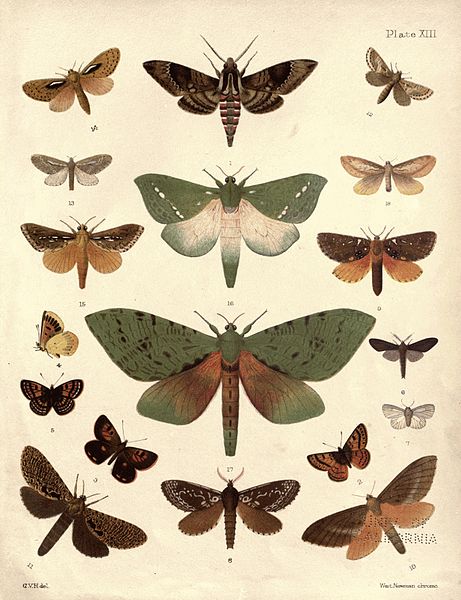Compass Moths
For those who travel between the realms, Compass Moths are a crucial help for finding Crossroads, places through which one can move from one realm to another. It is no wonder these creatures that naturally gravitate to liminal spaces are prized possessions in every Court.
Basic Information
Anatomy
Compass Moths have a similar anatomy to other moth species. They have two sets of scaled wings, with the fore pair being notably larger than the hind pair. There is a huge variety in coloration and markings, and while the natural Compass Moths were rather dull in colour, bright jewel like colours have become mostly dominant in the domesticated variety, thanks to their popularity and selective breeding by moth breeders.
Apart from the wings, one of the most distinctive features of Compass Moths are their fern like antennae, that are relatively sizeable when compared to many other moth species. Compass Moths also have large, black or even colorful eyes that many people find gives them a rather intelligent look.
Genetics and Reproduction
Like with other moths, Compass Moths are holometabolous and undergo complete metamorphosis. Eggs are laid near on suitable host plants for the larvae to eat. Once fully matured, the larva develops into a pupa after spinning a cocoon. Once the metamorphosis is completed, an adult moth emerges.
Unlike many other moth species, Compass Moths can mate and lay eggs multiple times during their life, thanks to their longer lifespans. Mating happens usually once a year, and the exact time depends usually of the Court the moths are bred within.
Additional Information
Social Structure
Breeding moths usually live in colonies but do not seem to possess any particular hierarchy. Working Compass Moths are usually singular, but they don't mind conspecifics. Some owners have reported their Compass Moth showing signs of a jealous behaviour if feeling neglected.
Domestication
Compass Moths are a domesticated species, that are bred in special hatcheries called Moth Gardens. After acquired by an individual, they require a special terrarium with plants to stay healthy, though many of them do enjoy flying around their owner's home freely as long as they have their on base to retire to eat and rest.
Uses, Products & Exploitation
Compass Moths are used to find Crossroads by Court members. Their cocoons are also used as components in magic and potions.
Average Intelligence
Compass Moths seem to possess a higher intelligence than an average insect, often compared to that of a rodent. Compass Moths can be taught to obey simple commands and they get really attached to their owner when kept well. They are sensitive creatures that can easily sense the mood of their keeper.
Perception and Sensory Capabilities
Compass Moths have a natural attraction towards Crossroads, similar to the attraction to light (positive phototaxis) other moth species possess. Some individuals of Compass Moths are also attracted to light, but this instinct is not as intense as with their cousins. Their attraction to Crossroads is also always stronger than to light sources.
Scientific Name
Hecate volata
Origin/Ancestry
Crossroads
Lifespan
Well kept Compass Moths can live up to 15 years, though around 10 years seems to be the average.
Average Physique
The wing span of Compass Moths varies from five to ten centimetres, though some individuals can be smaller or larger.




Comments